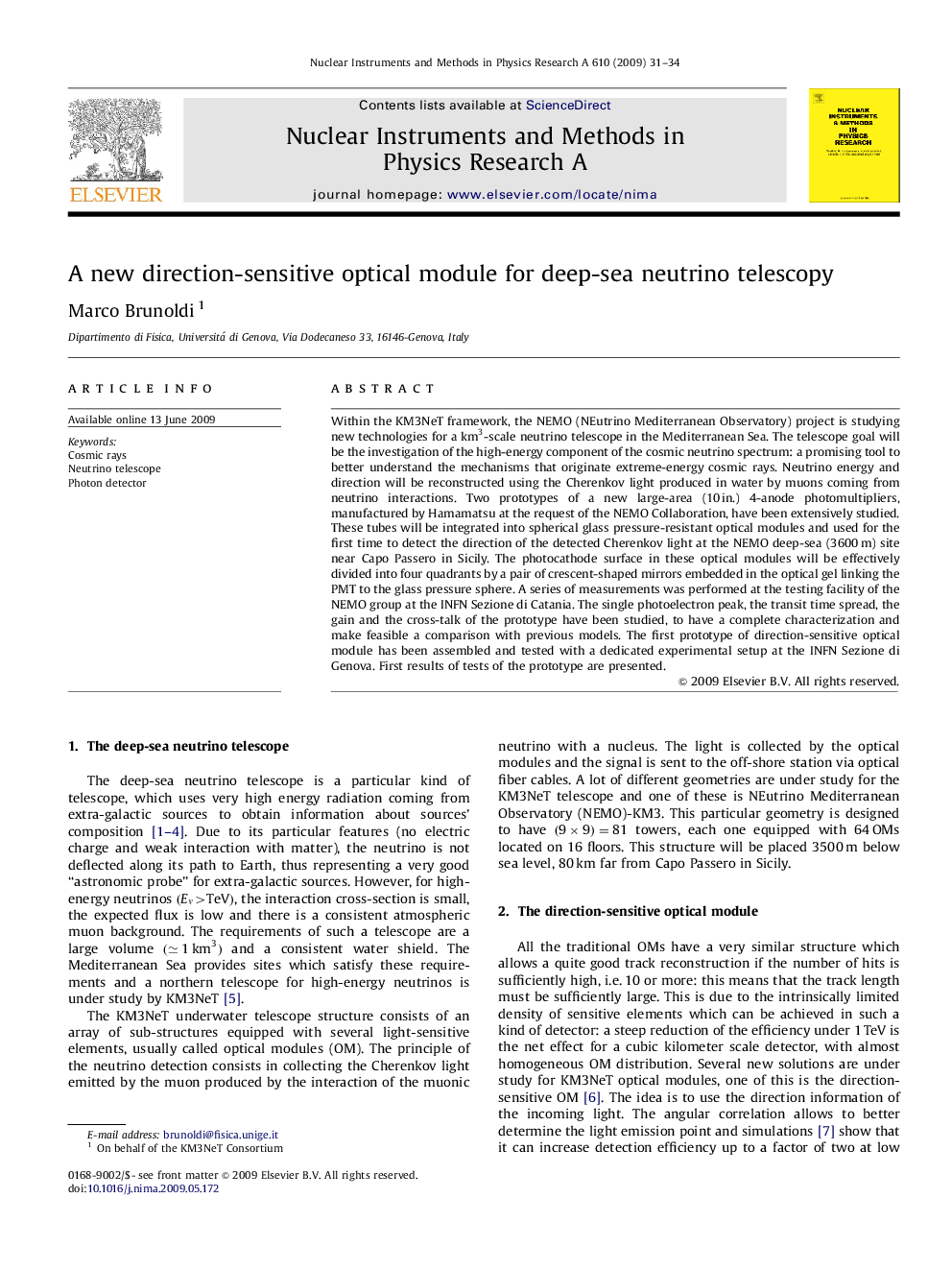| Article ID | Journal | Published Year | Pages | File Type |
|---|---|---|---|---|
| 1827566 | Nuclear Instruments and Methods in Physics Research Section A: Accelerators, Spectrometers, Detectors and Associated Equipment | 2009 | 4 Pages |
Within the KM3NeT framework, the NEMO (NEutrino Mediterranean Observatory) project is studying new technologies for a km3-scalekm3-scale neutrino telescope in the Mediterranean Sea. The telescope goal will be the investigation of the high-energy component of the cosmic neutrino spectrum: a promising tool to better understand the mechanisms that originate extreme-energy cosmic rays. Neutrino energy and direction will be reconstructed using the Cherenkov light produced in water by muons coming from neutrino interactions. Two prototypes of a new large-area (10 in.) 4-anode photomultipliers, manufactured by Hamamatsu at the request of the NEMO Collaboration, have been extensively studied. These tubes will be integrated into spherical glass pressure-resistant optical modules and used for the first time to detect the direction of the detected Cherenkov light at the NEMO deep-sea (3600 m) site near Capo Passero in Sicily. The photocathode surface in these optical modules will be effectively divided into four quadrants by a pair of crescent-shaped mirrors embedded in the optical gel linking the PMT to the glass pressure sphere. A series of measurements was performed at the testing facility of the NEMO group at the INFN Sezione di Catania. The single photoelectron peak, the transit time spread, the gain and the cross-talk of the prototype have been studied, to have a complete characterization and make feasible a comparison with previous models. The first prototype of direction-sensitive optical module has been assembled and tested with a dedicated experimental setup at the INFN Sezione di Genova. First results of tests of the prototype are presented.
